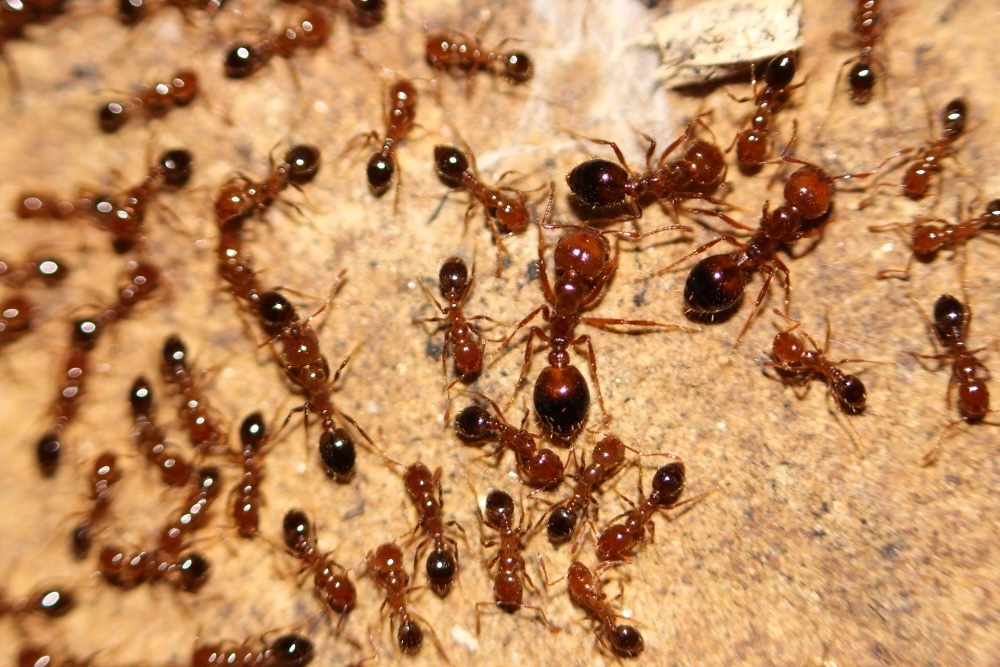Red Imported Fire Ants Found in Montecito

The Santa Barbara’s Agricultural Commissioner’s Office is working to eradicate an infestation of Red Imported Fire Ants (RIFA), Solenopsis invicta, at a property in Montecito. The infestation was confirmed to have spread by a shipment of nursery stock brought by a licensed landscaper from a wholesale nursery in Riverside County, according to the County of Santa Barbara. The Santa Barbara County Agricultural Commissioner’s Office is collaborating with the California Department of Food and Agriculture, as well as the University of California Cooperative Extension (UCCE) and the Riverside County Agricultural Commissioner’s Office to conduct regular surveys on the property impacted by the infestation. “Our team is working hard to eradicate the infestation,” shares Public Information Officer Kelsey Buttitta. Working alongside licensed exterminators based upon UCCE guidance, the Santa Barbara County Agricultural Commissioner’s Office team is treating the infestation by “drenching it with a product containing the active ingredient bifenthrin followed by a bait containing the active ingredient s-methoprene,” Buttitta explains. While the last infestation took two years to eradicate, Deputy Agricultural Commissioner Stephanie Stark says, “We are hopeful we can eradicate the infestation this year…After eradication, we will monitor annually for
up to 5 years.”
RIFA originates from the lowlands of South America, primarily in Brazil and Argentina. These ants are highly aggressive and defend their nest/colony by biting and stinging threats such as humans, pets and livestock. When stung, RIFA venom can cause pustules on the skin that can scar and are dangerous and even fatal to those with sensitivities or allergies to the venom. RIFA are unique due to their aggressive nature, but can easily be mistaken for native fire ants and Argentine ants due to their similar color and size. Foraging RIFA may clog irrigation lines and short-circuit electrical systems, as well as interfere with native wildlife such as lizards and young birds in nests. The first documented interception of RIFA in California was at a border station in 1984. Since then there have been periodic outbreaks in multiple counties throughout the state, limited to private properties with rapid eradication efforts. In 1999, a state-wide eradication effort began, ending four years later in 2003. Some counties in California have continued localized eradication efforts aimed at controlling RIFA infestations.
RIFA poses a major threat to the California economy with its impact on the nursery industry, whose value was estimated at $2.6 billion in 2002. In 2023, the Santa Barbara County Crop and Livestock Report shared that nursery products were the second most valuable to the county’s agricultural economy after strawberries, with a value of $122,301,000. If RIFA are accidentally shipped in potting soil to a new location, quarantines may be put in place to prevent the spread of infection to other nursery products. If under quarantine, plants cannot be shipped without the costly and labor-intensive process of applying pesticides to the products. RIFA stings can be highly dangerous for field workers as well. The nursery industry’s economy can face immediate impacts due to these risks.
Currently, there are no RIFA quarantines in Santa Barbara County. This infestation, which is contained to a singular property in Montecito, is the only known case. Community members who believe they may have found RIFA are encouraged to contact any of the Santa Barbara County Agricultural Commissioner’s Offices or bring in a sample.







